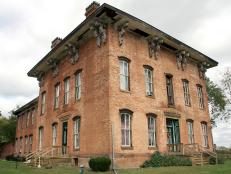10 Haunted Things to Do in Plymouth, Massachusetts
Settled in 1620, Plymouth had its share of tragedies, and some say ghosts haunt its historic sites and streets.
Related To:
lessRelated To:
Burial Hill
Plymouth, Massachusetts is rich in history — and ghost stories. That's not surprising. Life was brutal there in the early 1620s, when hundreds of Pilgrims and Native people perished from disease and hunger.
Not every place in Plymouth is haunted, of course. But you can imagine spirits lingering at Burial Hill. This 17th-century cemetery is the final resting place for William Bradford and other colonists. The Plymouth Antiquarian Society and Pilgrim Hall Museum give free tours of the hill that focus on art, history and other topics.
When visiting Plymouth sites and attractions, confirm their dates and hours of operation before you go. Some are not open year-round.
Burial Hill Tours
If you're looking for paranormal activity in Plymouth, take a Dead of Night Twilight Lantern Ghost Tour through the city streets into Old Town Square, said to be cursed by King Philip. Or visit Burial Hill which some say is a hotbed of hobgoblins, complete with Revolutionary War sailors who perished in the cold waters of Plymouth Bay after their ship sank. Others report seeing pukwudgies — small, impish creatures that come and go at will. Don’t like dark cemeteries? Choose a daytime or sunset tour instead.
Mayflower Society House
The Mayflower Society House is another spirited spot in Plymouth. The great-grandson of one of the original Pilgrims, Edward Wilson, built it in 1754, but because he was a Loyalist who sided with the Tories during the Revolutionary War, he was eventually run out of town. As the story goes, he fled to Canada, leaving his spirit behind to haunt the house. Does Wilson miss his former residence, now open to the public as a museum? Visitors occasionally report hearing an organ, long gone, playing in the library.
Plimouth Plantation
Step back in time at Plimoth Plantation, Plymouth’s living history museum, to see recreations of a 17th-century English village, a Native Peoples homesite, heritage breeds of animals and more. In 2020, you'll also see the Mayflower II, a full-scale replica of the original ship that's being restored for the 400th anniversary of the Pilgrims’ arrival. While the plantation is historic, it isn’t haunted —unless you count the memories of the terrible hardships suffered by the colonists and Native Peoples. Visit the plantation at 137 Warren Avenue.
Trask House
The 1829 Trask House is said to be one of the most haunted houses in Plymouth. Once a historic museum filled with Victorian-era furnishings, tales of lights flicked on and off by unseen hands, eerie sounds and shadows lurking behind windows finally drove everyone away. Now open to visitors on Dead of Night Ghost Tours, the Trask House is near the Old North Street Tea and Curiosity Shop, where knocking noises, objects that move by themselves and other oddities have been reported. The Trask House and tea shop are both located at 31 North Street in Plymouth.
Spooner House
Named for one family that occupied it for over two centuries, the 1749 Spooner House became a museum after the last occupant moved away. Visitors can tour the house to see five generations of Spooner family heirlooms and furnishings from colonial times — and they might even see a ghost. In the 1700s, before penicillin was discovered, a little girl died in the house from an abscessed tooth. Local legend says she'll often invite you in or peer out the window when you knock. At a Halloween séance held in the house a few years ago, a medium reported sensing not one, but two little ghosts.
Plymouth Rock
Dead of Night Ghost Tours meet at a hearse parked near Plymouth Rock. This massive granite boulder — which isn't haunted, as far as anyone knows — is said to have been used by the Pilgrims as they stepped down from the Mayflower onto the shores of the New World. The rock, now a symbol of their brave voyage, sits under a portico and behind a barrier. The rock is kept several feet below street level so the 1 million-plus visitors it attracts each year can't chip off souvenirs. Look for it in Pilgrim Memorial State Park at 79 Water Street.
Mayflower Meetinghouse
The Mayflower Pilgrims built their first meeting house in 1621 on what is now Plymouth’s historic Town Square. The National Pilgrim Memorial Meetinghouse, shown here, is the fifth structure built on the site, and it’s still used as a meeting place by a Unitarian Universalist Church. Take a free guided tour (donations are welcome) to admire the brilliant stained-glass windows that have been added to this oldest, continuously used church in the country. A window that depicts the signing of the Mayflower Compact bears the signature of Louis Comfort Tiffany. The meetinghouse may not be haunted, but it's hauntingly beautiful.
Sparrow House
The Plymouth Village Historic District, listed on the National Register of Historic Places, includes part of the settlement established by the early colonists. It also takes in Leyden Street, said to be haunted by the ghost of a young boy. If apparitions give you chills, skip the ghost-hunting and visit the Richard Sparrow House instead. Built in 1640 for an English surveyor and his family, it was one of the finest homes of its time, with leaded glass windows, paneled walls and two stories. Now a historic house museum and art gallery, you'll find it at 42 Summer Street.
Coles Hill
A statue of Massasoit, the Wampanoag chief who befriended the English colonists, overlooks the bay from atop Coles Hill. Many early settlers were buried here during the “starving time,” the winter of 1620-1621. One written account describes a 1735 storm that washed skulls and bones off the hill and into the harbor, and still more bones were discovered during excavations of the site in the 18th and 19th centuries. In 1921, they were reinterred in a stone crypt on the hill. Coles Hill is now a public park, a National Historic Landmark and a popular stop on ghost tours. Visit it on Carver Street, across the street from Plymouth Rock.
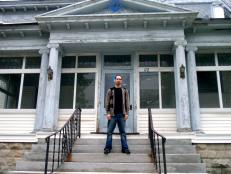
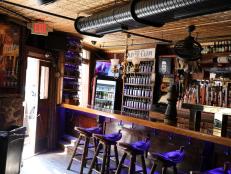
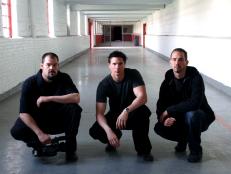
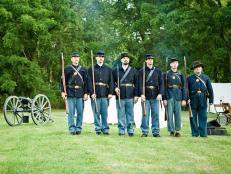
![The Beauregard Parish Jail was established in 1914, under Sheriff W.A. Martin. The gothic style jail is commonly referred to as the "hanging jail". [via Beauregard Parish Sheriff's Office]](http://travel.home.sndimg.com/content/dam/images/travel/fullset/2021/07/Old-Beauregard-Parish-Jail-Haunted-Louisiana-072021.png.rend.hgtvcom.231.174.suffix/1626818872160.png)
